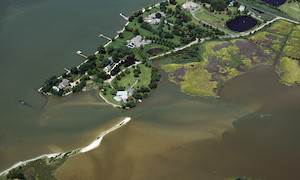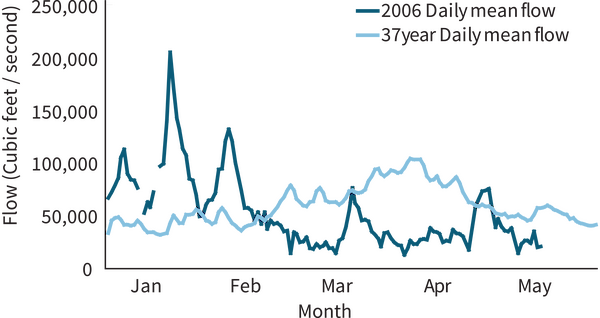
In 2006, dry spring weather conditions mixed with intense summer rains led to turbid water, algal blooms, and low dissolved oxygen. While flow is typically high in the spring and tapers off through summer, 2006 was characterized by an unusually dry spring ending with a late June rain event that led to a rapid increase in river flow and nutrient and sediment loads. A second wet period occurred in late August as a result of Hurricane Ernesto. The oscillating summer conditions led to record low and high nutrient and sediment loads to the Bay during different months.
Nutrient loads are strongly linked to river discharge and have an influence on many aspects of the Bay’s health. During 2006, the Susquehanna River flow was above average during January and early February but dropped below average from mid February to mid May due to the wet winter and dry spring. While flow is typically high in the spring and dies off through summer, 2006 was characterized by the unusually dry spring ending with a late mid-summer rain, which led to an increase in river flow and nutrient and sediment loads. In June, Tropical Storm Alberto passed over North Carolina and became a low tropical pressure off the coast of the mid-Atlantic. At the same time, the jet stream stalled west of the Appalachian Mountains and a warm, dry air stream formed over the North Atlantic. The combination created heavy rain in the Chesapeake Bay region, leading to one of the wettest Junes on record between 1895 and 2006.

